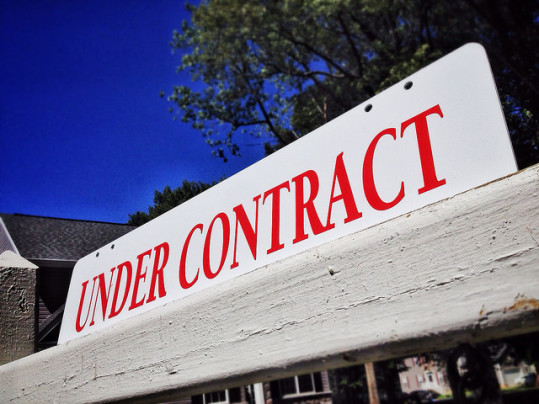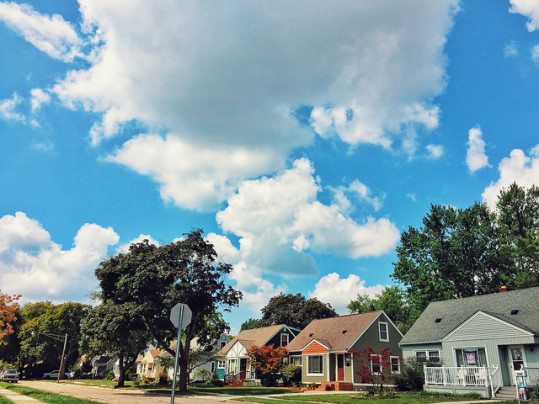The real estate market is hard to time. That’s why you should buy a house because you want to become a homeowner and stay somewhere for awhile, not because you hope to make money off the eventual sale of your house. However, new data shows that recent home sellers who’ve lived in their homes for around 7 years have been seeing big returns. In fact, nationally home sellers sold their homes for 24 percent more than what they originally paid. And, in some markets, that percentage is far higher. For example, Oakland’s typical seller sold for 78 percent more than what they paid and, in Portland, sellers saw a 65 percent gain after living somewhere for 9 years. Most of the largest returns were seen in markets in the West, though Philadelphia, New Orleans, and Boston also made the list. It should be noted, however, that though these numbers may make it seem easy to cash in on your house, prospective home buyers should know that the housing market tends to move up-and-down over the years. Homeowners who are selling a home they bought 7 years ago were buying at a time when home prices had recently plummeted, which makes their gains more understandable and less likely to repeat. More here.
Archive for September 2017
Americans See A Good Opportunity To Sell
For many years, when home prices and mortgage rates were both lower than normal, home buyers had a historic opportunity to find a great deal and lock in an excellent rate. These days, though mortgage rates remain historically low, home prices have rebounded and, in some markets, surpassed previous peaks. Which explains why the most recent results of Fannie Mae’s monthly Home Purchase Sentiment Index show more Americans saying it is a good time to sell a house than buy one. In fact, the number of respondents who said it was a good time to sell was up 8 percent over the month before. At the same time, the number who said it was a good time to buy fell. Doug Duncan, Fannie Mae’s senior vice president and chief economist, says the survey has seen its results reversed over the past few years. “In the early stages of the economic expansion, home selling sentiment trailed home buying sentiment by a significant margin. The reverse is true today,” Duncan said. “The net good time to sell share is now double the net good time to buy share, with record high percentages of consumers citing home prices as the primary reason for both perceptions.” But though that may sound like bad news for potential buyers, the more American homeowners put their homes up for sale, the more likely price increases will slow down and offer buyers some relief. More here.
Rate Drop Spurs Mortgage Application Demand
According to the Mortgage Bankers Association’s Weekly Applications Survey – which covers more than 75 percent of all retail residential mortgages – average mortgage rates fell last week across all loan categories and are at their lowest level since last November. Rates fell significantly for 30-year fixed-rate mortgages with conforming loan balances, but were also down for loans backed by the Federal Housing Administration and 15-year fixed-rate loans. Joel Kan, an MBA economist, told CNBC rates dropped largely because of concern over international events. “Heightened geopolitical tensions last week brought mortgage rates to their lowest level since the 2016 election,” Kan said. “Refinance volume jumped as a result, and for the first time since January, the majority of application volume was for refinances, with the refinance share almost 51 percent.” Still, demand for loans to buy homes rose as well last week and is now 5 percent higher than at the same time last year. The week’s results were also affected by Hurricane Harvey, which disrupted bank activity and led to double-digit declines in Texas. More here.
What Will The Housing Market Look Like This Fall?
It can be hard to get a grasp on what is happening in the housing market with the constant news updates about home sales, mortgage rates, and prices. Monthly housing reports can be volatile and can give a skewed view of where things are. They can also confuse and discourage potential home buyers. But you shouldn’t get down on yourself if you feel like you aren’t sure if now’s a good time to buy or sell a house. Instead, take a long view of the market to help put things in perspective. For example, recent research from Freddie Mac shows that sales of previously owned homes are up 2.1 percent so far this year and on pace for their best year since 2007. Mortgage rates are still historically low and expected to stay that way through the end of the year. And home prices continue to push upward – mostly due to the fact that, in many markets, there are fewer homes for sale than is typical. All in all, this means, heading into fall, the housing market will likely continue to see higher home prices being balanced by low mortgage rates. But, though affordability conditions may not change dramatically one way or the other, there will still be fewer homes for buyers to choose from – which means you’ll want to be ready to move quickly this fall, even if the market is less competitive than it was during the summer. More here.
Contract Signings Hold Steady In July
The number of contracts to buy homes signed during any given month can be used to get an idea of what home sales are going to look like in coming months. That’s why the National Association of Realtors tracks pending home sales. Because pending sales measure signings, not closings, they can be a good indicator of future existing home sales. In July, the NAR’s Pending Home Sales Index fell 0.8 percent, marking the third decline in four months. Lawrence Yun, NAR’s chief economist, says buyer traffic continues to be higher than the supply of homes for sale. “Buyer traffic continues to be higher than a year ago, the typical listing has gone under contract within a month since April, and inventory at the end of July was 9 percent lower than last July,” Yun said. “The reality, therefore, is that sales in coming months will not break out unless supply miraculously improves.” But, despite the challenges, the NAR still expects sales to surpass last year’s levels, if only slightly. Also in the report, the national median existing-home price is expected to be up 5 percent this year, which is about the same amount prices rose the year before. More here.
First Time Home Buyers Are Eager To Buy
New data shows first-time home buyers bought more single-family homes during the second quarter of this year than they have since 1999. That’s significant, since first-time buyers are an important demographic for the overall health of the housing market. Typically, young Americans account for around 40 percent of all home sales. For the past several years, though, they’ve been less active. However, according to new numbers from Genworth Mortgage Insurance, they accounted for 36 percent of all homes sold during the second quarter of this year, which is an improvement over last year. Tian Liu, Genworth’s chief economist, says the number of interested first-time buyers is growing. “As the housing market matures, first-time home buyers are becoming an even more important source of growth,” Liu says. “Whether one looks at the three million missing first-time home buyers since 2007 or the historically low homeownership rate among young households, the potential growth opportunity remains large and will likely take years to play out.” In short, there is pent-up demand among young Americans hoping to become homeowners. How and when they decide to enter the market will determine what the real estate market looks like for the next few years. More here.






